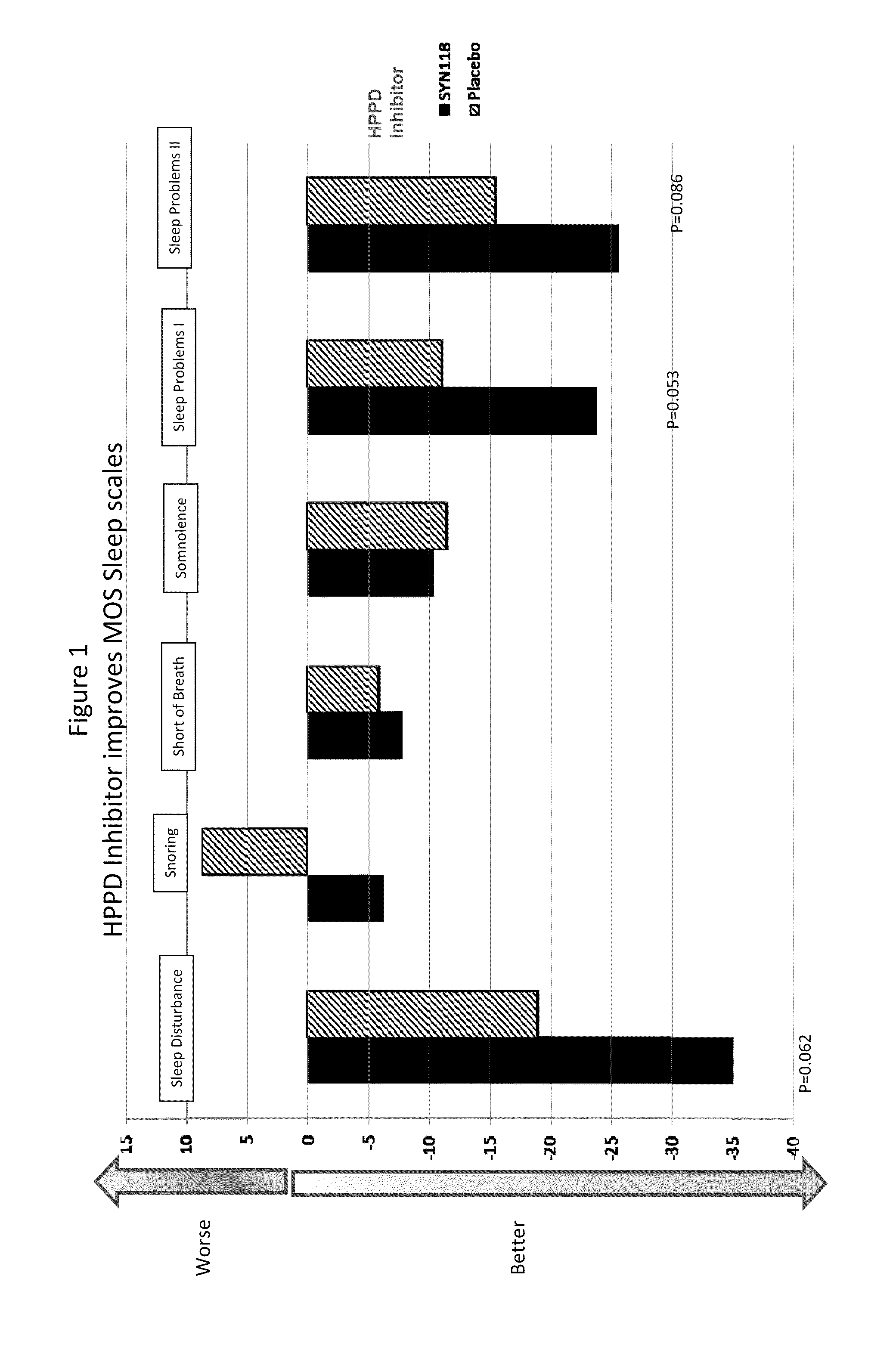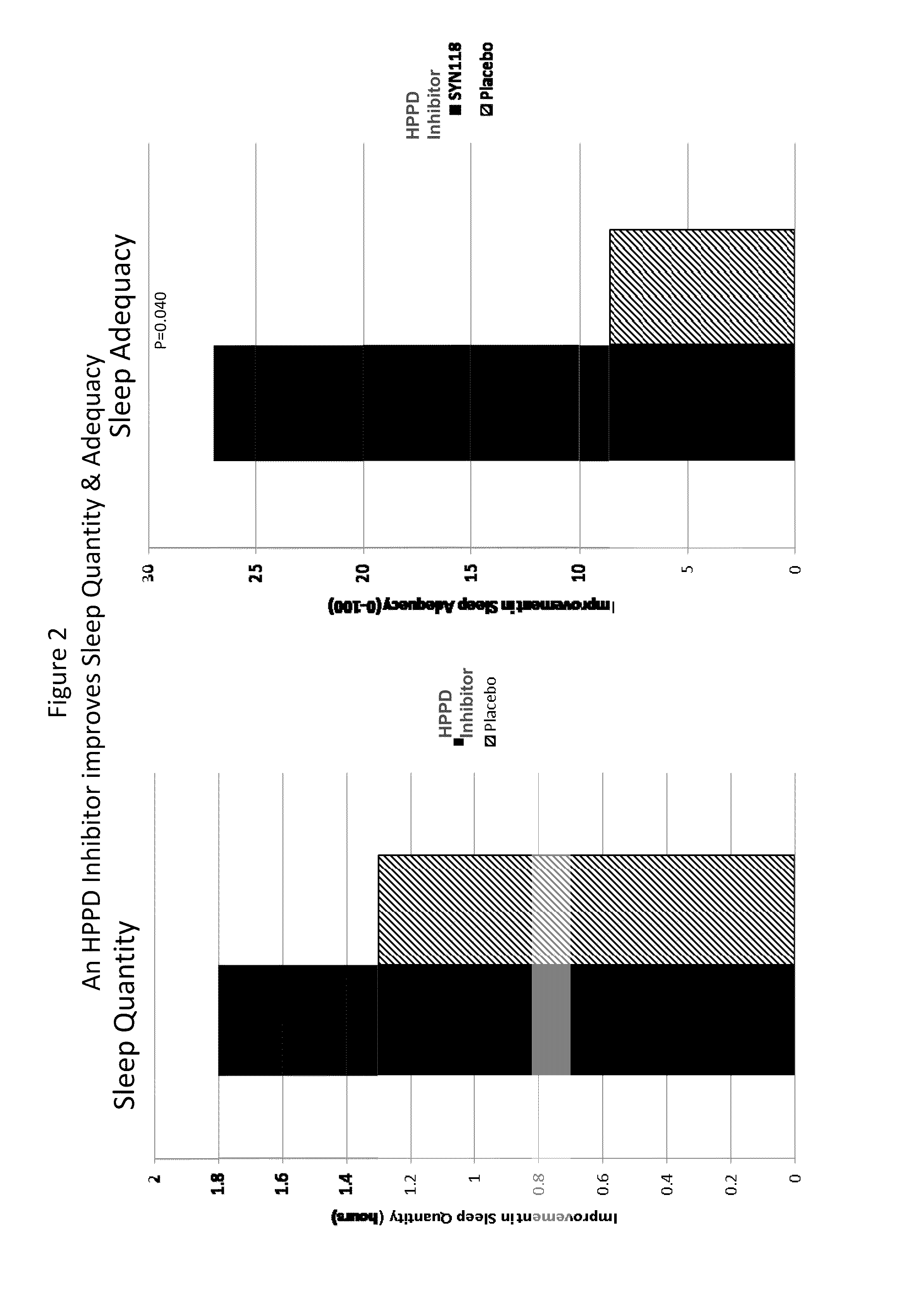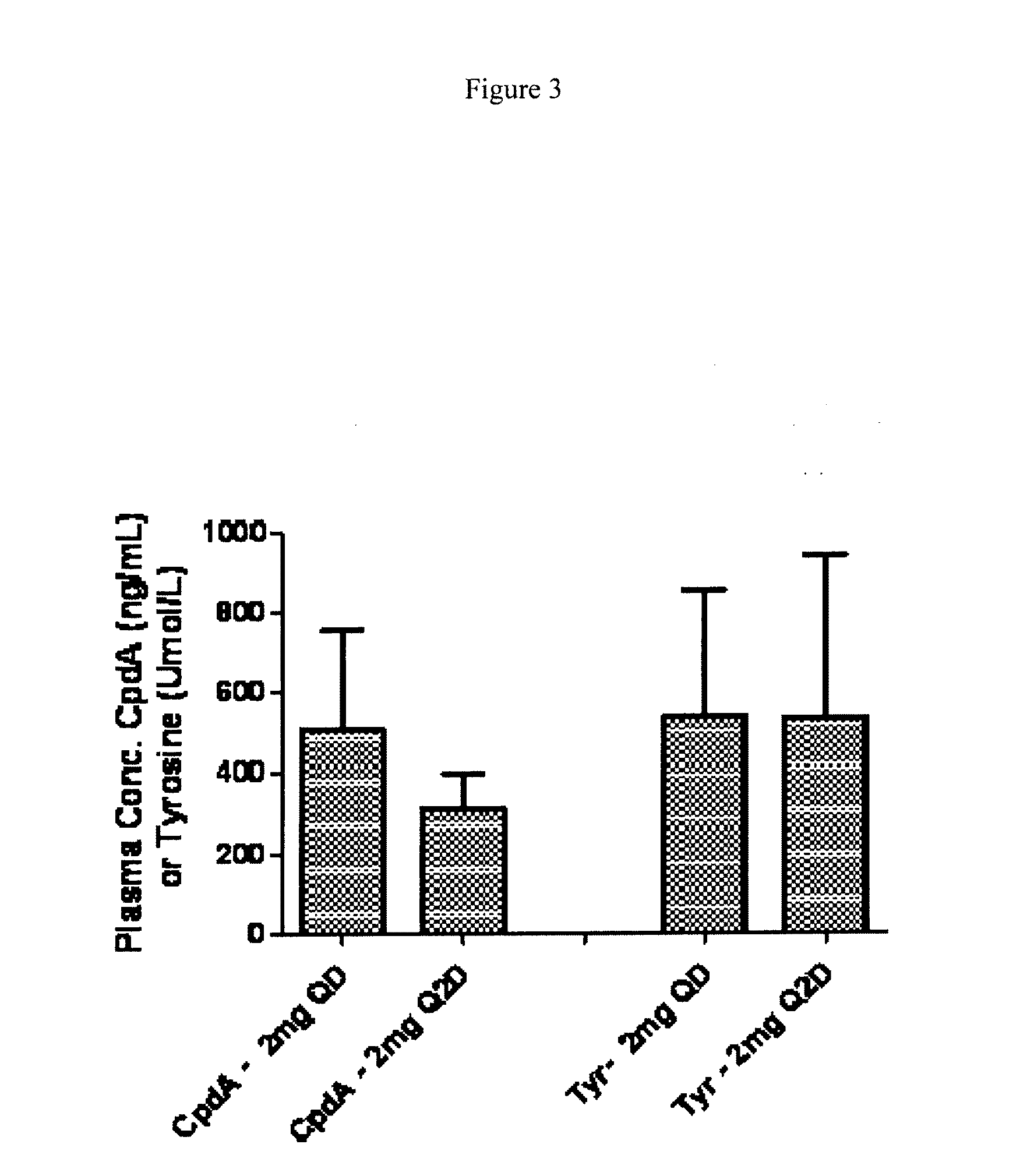Treatment of restless leg syndrome and sleep disorders
a restless leg syndrome and sleep disorder technology, applied in the field of restless leg syndrome and sleep disorders, can solve the problems of rls return symptoms, limited current treatment options, undesirable side effects of treatments, etc., and achieve the effect of improving sleep quantity and adequacy
- Summary
- Abstract
- Description
- Claims
- Application Information
AI Technical Summary
Benefits of technology
Problems solved by technology
Method used
Image
Examples
example 1
Study Design
[0102]The study multi-centre, randomized, double-blind, parallel-groups, placebo-controlled study with 2 treatment arms, oral HPPD inhibitor (2-(2-nitro-4-trifluoromethylbenzoyl)-1,3-cyclohexanedione) and placebo. Subjects were randomized to either treatment with an HPPD inhibitor or placebo in a 2:1 ratio. The subjects were dosed with 4 mg on day 1, and 2 mg / day on days 2-14. The total duration of treatment with study drug for each subject was 14 consecutive days ending at the day of the final sleep lab assessment (Day 14), with a follow-up examination 29 days after Baseline.
[0103]The objective of this exploratory study was to show proof-of-concept of therapy with an exemplary HPPD inhibitor in moderate to severe idiopathic RLS subjects. It was assessed whether a reduction in motor symptoms and subjective severity ratings of the RLS under 2-(2-nitro-4-trifluoromethylbenzoyl)-1,3-cyclohexanedione therapy compared to placebo could be demonstrated.
[0104]Efficacy parameters...
example 2
Improvement in Sleep Parameters
[0131]Subjects with RLS received either placebo (7 subjects) or an HPPD inhibitor (13 subjects) given as 4 mg on day 1, then 2 mg per day for days 2-14 of the trial. Various parameters relevant to RLS were monitored during the course of treatment, in particular the quality of their sleep patterns using a standard assessment scale (Medical Outcomes Study (MOS) Sleep Scale). Individuals were asked to complete a standard evaluation of their ‘normal’ sleep experience at the start of the trial (Baseline) and again at the end of treatment (EoT), with the various parameters scored according to the attached document. Trends to positive effects were seen in all the parameters measured, reaching statistical significance for the “Sleep Adequacy” parameter.
MOS Sleep Scale
[0132]The MOS Sleep Scale is a comprehensive subject completed sleep questionnaire consisting of 12 items (Hays and Stewart, 1992; Hays et al., 2005). Each item measures a unique aspect or charact...
PUM
| Property | Measurement | Unit |
|---|---|---|
| Mass | aaaaa | aaaaa |
| Mass | aaaaa | aaaaa |
| Mass | aaaaa | aaaaa |
Abstract
Description
Claims
Application Information
 Login to View More
Login to View More - Generate Ideas
- Intellectual Property
- Life Sciences
- Materials
- Tech Scout
- Unparalleled Data Quality
- Higher Quality Content
- 60% Fewer Hallucinations
Browse by: Latest US Patents, China's latest patents, Technical Efficacy Thesaurus, Application Domain, Technology Topic, Popular Technical Reports.
© 2025 PatSnap. All rights reserved.Legal|Privacy policy|Modern Slavery Act Transparency Statement|Sitemap|About US| Contact US: help@patsnap.com



